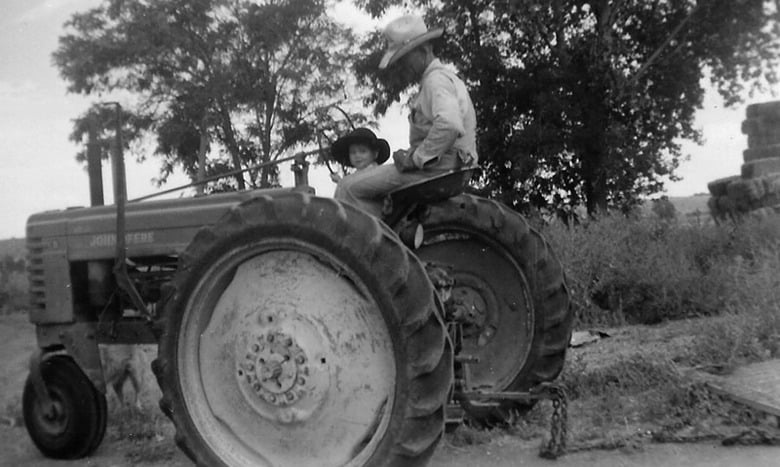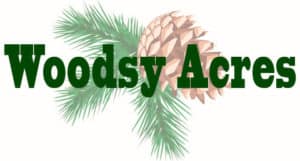
Growing up, I would visit my grandparent’s farm where they had a tractor that I would ride on with my grandfather. When I got my own land I decided to do some research of my own on owning a tractor.
Having a tractor on wooded acres, homestead, or small farm makes life’s work much easier and time-saving. Depending on what you’re using the land for, its size, plus the terrain will warrant whether or not the investment of a tractor is needed.
When I first started thinking about a tractor, my immediate association was with farming. On a farm, a tractor can have many uses to help with cultivating the ground by tilling, plowing, disking, harrowing, and planting fields. Other applications for a tractor on a farm can be pulling, pushing, loading, and towing agricultural equipment which all can require a larger horse-powered tractor.
So when I first bought our 20 Woodsy Acres, I started thinking about all the items I’d need to maintain the property. One question that came to mind is like my grandparents do I need a tractor, what size tractor do I need, and how can that tractor benefit the land?
My research found that using a tractor on a wooded piece of property that is five acres and larger can have similar tasks as a tractor property on a farm. The difference being in the woods there might not be as much plowing, cultivating, or manure spreading if any.
What Size Tractor Do I Need?
Depending on your plans with a piece of wooded property it’s entirely possible, especially just starting out, a full-sized tractor may not be necessary to do the tasks at hand. However, other things are critical to keeping land maintained such as attaching a specific implement for the tractor, pulling out stumps, hauling firewood, hauling felled logs to the portable mill, etc. So instead of a large full-size tractor, I found compact tractors that had implements that fit the bill for these mentioned needs.
Compact tractors typically fall in the horsepower range of 15 hp to 40 hp and anything above a 40 horsepower tractor is starting to get up there in size. A lot of times the size of the tractor can be the determining factor of which implements to look for to do the work on the property.
Depending on your property a smaller compact tractor is more comfortable to manipulate through aisles of crops, various farm buildings, or Ponderosa pine trees. Larger tractors are great for heavy jobs, especially if you’re managing a large farm with fields to plow and crops to harvest but can be challenging to maneuver around the landscape.
Tractor Implements
To find more details regarding tractor implements, see my article titled, 13 Useful Tractor Implements and Attachments. Most tractors come with what is referred to as a three-point hitch, which comes in four categories starting with 0 up to a category 3. This hitch looks a lot like the letter A or a triangle using hydraulics to raise and lower attached devices to the tractor. With this type of hitch, a wide variety of implements can be connected to the tractor. Some implements will vary based on which category the tractor has. Compact tractors typically use category 0 and 1.
- Brush Cutter
- Finish Mower
- Rake
- Rototiller
- Grading Blade
- Box Scraper
- Boom
- Hitch with ball
- Posthole auger (digger)
- Snowblower
- Spreader
- Heck, even a backhoe can be attached to some tractors.

Tractor Usage
Here are 15 tasks that might need to be completed on a forested or even non-forested piece of property.
- Make or clear a road.
- Make or repair a trail.
- Mow down heavy brush.
- Mow an open field or pasture.
- Repair or leveling of an existing road or driveway.
- Pull and remove tree stumps.
- Clear large areas of the property of debris, limbs, and/or pine needles.
- Easily lift items such as masonry, or roofing materials to secondary levels of construction.
- Move or haul large rocks, this is where a front-end loader will be handy.
- Dragging felled logs to their destination. Use the 3-point hitch or front loader with a D-ring.
- Use the front bucket to load up haul cut to length firewood to be moved to the splitter.
- Use a sidebar to transport a flatbed or utility trailer from one area to another.
- Equip the front bucket with forks to lift building materials, pallets, or even felled logs.
- Use the same forks to load and transport slash after felling a large tree.
- In snowy areas use the tractor’s front bucket, or rear attached grader blade to clear the road or even attach a snow blower.
Is a 4WD Tractor Needed?
One other thing I needed to consider when looking for a tractor was whether I could get by with a standard two-wheel drive tractor or should I spend the extra money for the 4-wheel drive model. With our property being on a hill it was a no brainer for me to need a 4WD tractor for better traction. Optional traction to the front wheels just like on a 4WD vehicle. Had our property been flat or with only a slight grade to it than a two-wheel drive tractor would have been enough.
Diesel or Gasoline Engine?
Which should you get when seeking out a tractor? To begin with, most compact tractors I looked at with a 17HP engine and up were diesel. Because of the differences in design, diesel engines have several advantages over gasoline engines. Gasoline engines require a lot more moving parts which makes them more susceptible to breakdowns. The gasoline engine, engineered to get power more from RPM’s give the diesel more overall power due to how it uses those same RPM’s in its design.
Why are Tractor Back Wheels Larger?
One of the most notable things about a tractor is the large back wheels and tires and the small front wheel and tires. The idea behind the larger rear wheels and tires is to have more ground contact for better weight distribution of the tractor. Another attribute of the larger tires is the large fin tread that aids in gripping earth for better traction.
Because the front wheels are mostly used for steering the tractor, they are smaller with less ground contact allowing for a better turning radius.
